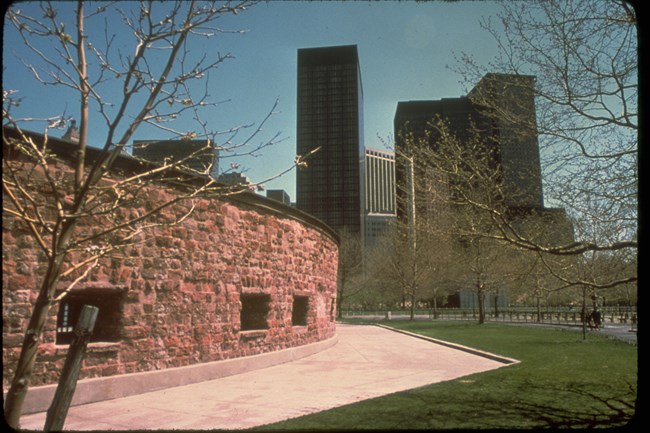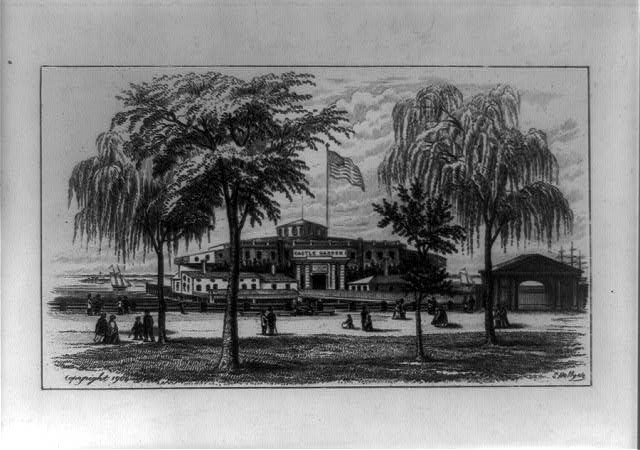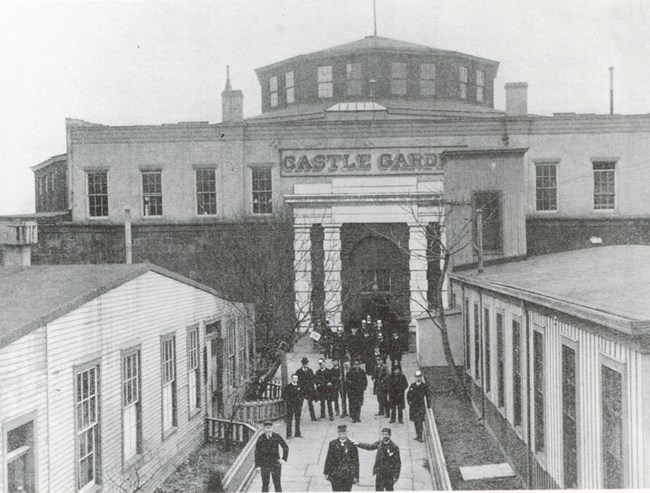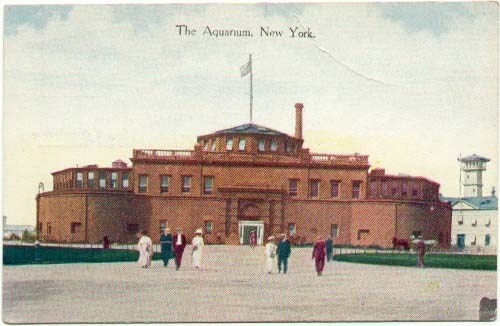
.
The South West Battery 1811-1821 The United States declared War on Great Britain on June 12, 1812. The declaration was the result of long simmering disputes with Great Britain. The central dispute surrounded the impressment of American soldiers by the British. The British attacked the USS Chesapeake and nearly caused a war two years earlier. Additional, disputes continued with Great Britain over the Northwest Territories and the border with Canada. Attempts by Great Britain to impose a blockade on France during the Napoleonic Wars were also a constant source of conflict with the United States. During the Battle of Bladensburg (August 24, 1814), the British marched into Washington, D.C., and burned most of the public buildings. President James Madison had to flee into the countryside. The British then turned to attack Baltimore but met stiffer resistance and were forced to retire after the American defense of Fort McHenry, which inspired Francis Scott Key to write the words of the "Star-Spangled Banner." The war raged on for several more years until both sides were finally ready to negotiate a peace. The Treaty of Ghent was signed on December 24, 1814, but it took several months for the news to arrive back in the United States. The Battle of New Orleans took place on January 8, 1815, becoming the final major battle of the War of 1812. Acknowledging increasing tensions with the British, American harbor cities began building forts for protection. New York City was no exception. Four forts were built to defend the harbor; Castle Williams on Governor's Island, Fort Wood on Bedloe's Island (known today as Liberty Island), Fort Gibson on Ellis Island and Southwest Battery on Manhattan Island. Southwest Battery was constructed on the rocks off the tip of Manhattan between 1808 and 1811. The fort was fully armed with 28 cannons. Each cannon could shoot a 32 pound cannonball a distance of 1.5 miles. On March 27, 1812, General Joseph Bloomfield was appointed to the command of all the fortifications in New York City and harbor. He established his headquarters at Southwest Battery. The four forts in the harbor kept the British Navy at bay and Southwest Battery never had occasion to fire upon the enemy.In 1817, the fort was renamed Castle Clinton in honor of Dewitt Clinton, Mayor and later Governor of New York. 
Castle Garden, the Entertainment Center 1823-1854 In 1823 the fort was deeded to New York City. The following summer a new restaurant and entertainment center opened at the site, renamed Castle Garden. A roof was added in the 1840s, and Castle Garden served as an opera house and theater until 1854. Many new inventions were demonstrated there, including the telegraph, Colt revolving rifles, steam-powered fire engines, and underwater electronic explosives. Opera singer Jenny Lind, the "Swedish Nightingale," made her American debut here in 1850. She was brought to America by none other than P.T. Barnum, famous for his American Museum full of "freaks," and later the famous circus which bears his name today. 
The Immigration Years 1855-1890 On August 3, 1855, Castle Garden opened as an immigrant landing depot. The creation of Castle Garden, the first official immigrant processing center in the nation, represented a country at a crossroads, signaling a change in American immigration policy, and in the ways through which immigrants became Americans. During the next 34 years, over 8 million people entered the United States through Castle Garden. Two out of every three immigrants to the United States in this period passed through the Castle Garden. It was closed on April 18, 1890. 
New York City Aquarium With the Federal government taking control of immigration and the opening of Ellis Island, Castle Garden's time as an immigration center ends. The building was remodeled once again and reopened as the New York City Aquarium on December 10, 1896. The exotic fish and Beluga whale made the aquarium one of the city's most popular attractions. With over 30,000 visitors on opening day the aquarium averaged over 5,000 people per day. The New York City Aquarium was relocated to Coney Island in 1941. 
Castle Clinton Today Saved from demolition in 1946, the Castle was restored to its original design by the National Park Service. The site reopened in 1975 as Castle Clinton National Monument. Today the site houses the ticket office for the Statue of Liberty. Castle Clinton receives an annual visitation over 3 million making it one of the most visited National Park Service sites in the country. The fort originally built to keep people out now welcomes visitors from all over the world |

NPS Manhattan Historic Sites Archive Learn more about Castle Clinton National Monument, and other National Park Service sites in Manhattan, at the Manhattan Historic Sites Archive! This archive is comprised of items related to the important individuals and events associated with nine National Park Service historic sites in Manhattan (Castle Clinton N.M.,General Grant N. M., Hamilton Grange N. M., Theodore Roosevelt Birthplace N.H.S., Federal Hall N. M., Saint Paul's Church N.H.S., Stonewall N.M., Governor's Island N.M., and African Burial Ground N.M.) and to the creation and preservation of these sites. The materials are diverse in type, ranging from photographs, to letters, to maps and prints. This three-year project to catalog, reorganize, and digitize the collections was funded by the National Parks of New York Harbor Conservancy through a grant from the Leon Levy Foundation. Materials were chosen for digitization based on a variety of factors, including both informational and visual content, fragility, and aesthetic qualities. To visit the website and explore this archive, please click here. |
Last updated: March 30, 2025
